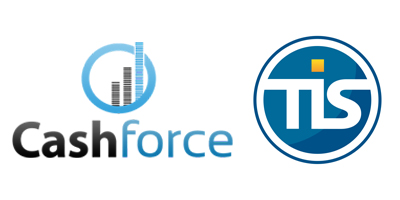| 26-01-2021 | treasuryXL | Nomentia |
Initiating a crisis management strategy is now top priority for people, businesses and Governments alike. Utilizing and developing survival capabilities is proving challenging for many organisations, including cash flow forecasting and managing risk around major supply chain disruptions.
Diligent Cash Management and scenario analysis are both integral to managing uncertainty during the current crisis but also positioning finance and treasury leaders as pivotal to driving successful recovery planning.

Top things businesses should be concentrating on during the current crisis
Most organisations have a real need to understand what their current liquidity is: today, tomorrow and into the future. Finance and treasury must continue to run the business as best as they can but, to do this effectively, they need to know how much cash they have to work with on a daily basis. Therefore, group-wide, real-time cash visibility and future cash forecasting are crucial – if you don’t have enough liquidity in the business then trouble could be looming on the horizon.
The first step is to figure out what the real cash picture looks like, identify gaps and put the necessary measures and contingencies in place to avoid nasty surprises. Bill payment periods may have to be extended, funding requirements and arrangements revisited, hedging policies re-worked etc but the big picture i.e. cash visibility, is critical.
Cash forecasting comes next in order of priority, gathering a full and concise picture of short-term cash availability is imperative. Maximising business agility with some ‘what if’ scenario modelling may be required, for example: what happens if we don’t get paid a percentage of what we are expecting, what fall back positions do we have on government grants, loan agreements etc. Again, the key driver is knowing your current cash picture now and today, allowing you the best possible position for making strategic, next-step decisions. And the situation is real, a Guardian report, on the 2nd April, states 6 out 10 (60%) UK firms have no more than 3 months of cash left!
Many companies are struggling with cash forecasting, they simply don’t have adequate tools in place. What can they do, right now, given the logistics of remote working?
Thankfully there’s a lot they can do, and quickly. Ensuring whatever systems they have in place for managing liquidity are as automated as possible to enable real time, up to date information access on cash visibility. If automation is a problem or the company is still using traditional manual processes, then change as soon as possible. This is not as difficult as it sounds as many cash management solutions are now available on monthly on-demand payment plans, cloud based and can be installed quickly and efficiently without the need for IT involvement, onsite implementation teams or large upfront fees.
Given the availability of cloud-based cash forecasting solutions, systems can also be accessed remotely so staff working from home can work as efficiently and effectively as if they were operating from their respective office environments.
Actionable advice for post-crisis future planning
Preparedness. Post-crisis analysis will be critical for all organisations. Some will have managed better than others, particularly those who had previously invested in technology upgrades and system automation. Questions around: how well we were prepared, what worked or didn’t work so well, will be food for thought for all business leaders.
But the fact remains technology is absolutely key to maintaining business agility and formulating crisis preparation. Automating as many tasks as possible, in order to provide real-time access to all the data and information needed to make quick and informed decisions, can mean the difference between success and failure. Many organisations will use the time now and post-crisis to reassess technology needs and processes and plan investment in tech upgrades and automation to improve agility, accuracy and efficiency for the future.
Here’s a round-up of some actionable advice for finance and treasury leaders:
- Know your cash availability today and going forward, focus on: group wide, real-time cash visibility and future cash forecasting
- Consider bill payment extensions & re-visit funding requirements
- Cash forecast regularly & consider fall back positions across a range of scenarios
- Automate as much as possible so you’re benefiting from real-time, up to date information on cash visibility – make those upgrades as soon as possible
- Cloud-based cash forecasting tools are more affordable and easier to implement than you might think – empower your staff with the ability to work as effectively as required, remotely
- Reflect on how well you were prepared for this current crisis. What worked and what didn’t work so well
- Automate as much as possible so that you benefit from real-time, accurate data to enable you to make key decisions as quickly as possible
Information is power, now more than ever.

About Nomentia
Nomentia is a Nordic powerhouse for global cash management. We believe in a world in which businesses can make the right decisions no matter how unpredictable the times are. Our SaaS-based platform offers solutions for cash forecasting and visibility, global payments with bank connectivity, reconciliation, in-house banking, guarantees, and FX dealing. We serve 2,300+ clients in over 100 countries processing more than 200 billion euros annually. Cash is king!

















